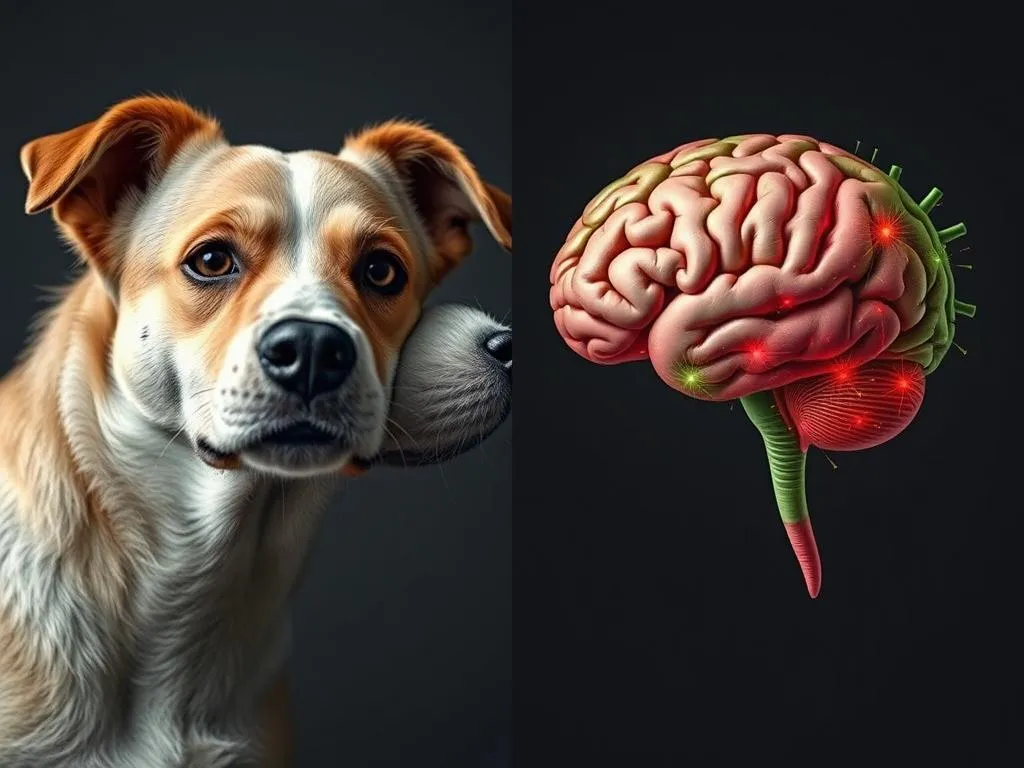
Introduction
Have you ever wondered what goes on inside your dog’s head? Are they really as smart as we think, or is it all just a clever act? The fascinating world of canine cognition reveals both similarities and differences between the dog brain vs human brain. Understanding these distinctions not only enhances our appreciation for our furry friends but also deepens our connection with them. This article will delve into the anatomy, cognitive abilities, emotional intelligence, and sensory processing of dogs and humans, shedding light on how these factors shape the way we interact with our canine companions.
Understanding the Brain
Basic Anatomy of the Brain
To grasp the differences between the dog brain vs human brain, we first need to look at the basic anatomy of each. Both dogs and humans possess a cerebral cortex, which is responsible for higher-level functions such as reasoning and problem-solving. However, there are notable distinctions.
- Cerebral Cortex: In humans, the cerebral cortex is larger and more complex, allowing for advanced cognitive functions. Dogs have a smaller cerebral cortex, which impacts their ability to perform tasks that require intricate thought processes.
- Limbic System: This section of the brain is crucial for emotion regulation. Dogs have a well-developed limbic system, similar to humans, allowing them to experience emotions like joy, fear, and love.
When comparing brain size, humans possess a larger brain overall, averaging about 1,300 to 1,400 grams, while a dog’s brain typically weighs between 70 to 100 grams. However, size alone doesn’t determine intelligence. Instead, the number of neurons plays a significant role.
- Neuron Count: Recent studies indicate that dogs have about 530 million cortical neurons, compared to humans, who boast around 16 billion. This discrepancy highlights the superior cognitive abilities of humans but also emphasizes that dogs exhibit remarkable intelligence in their own unique way.
Brain Size and Functionality
The relationship between brain size and intelligence is a complex one. In general, larger brains are associated with greater cognitive function, yet this is not a universal rule. The functionality of specific brain regions often takes precedence over sheer size.
For example, dogs have developed exceptional sensory processing abilities, particularly in their sense of smell. Their olfactory bulbs—responsible for scent detection—are significantly larger in proportion to their brain size compared to humans. This allows dogs to perceive the world through scent in ways that we cannot even imagine.
Cognitive Abilities
Learning and Memory
When it comes to learning, dogs and humans approach the task differently. Dogs primarily rely on associative learning, which means they learn by associating certain stimuli with specific outcomes. For instance, a dog might learn that sitting results in a treat. This form of learning is rooted in their natural instincts and is often highly effective.
In contrast, humans engage in a more complex cognitive process that includes critical thinking, reasoning, and abstract thought. Human learning often involves long-term and short-term memory retention, allowing us to recall information from years past while also processing new information rapidly.
Problem-Solving Skills
Dogs exhibit impressive problem-solving skills, although they often rely on intuition and instinct rather than analytical reasoning. For example, a dog may figure out how to open a door by nudging it with their nose or jumping up to reach a handle. In contrast, humans typically approach problems with a systematic method, utilizing logic and past experiences to devise solutions.
A great way to observe these differences is through tasks designed to challenge both species. For instance, puzzle toys that dispense treats can reveal how dogs use trial and error, while humans might strategize and plan multiple steps ahead to solve the same puzzle.
Language and Communication
Humans are verbal communicators, using complex language structures to convey thoughts, ideas, and emotions. Dogs, however, rely on a combination of vocalizations, body language, and facial expressions to communicate.
Research indicates that dogs can understand a limited number of human words and commands, often associating them with actions or outcomes. They may not grasp the nuances of language as humans do, but they are incredibly adept at reading human body language and emotional cues, allowing for effective communication between species.
Emotional Intelligence
Understanding Emotions
Both dogs and humans experience emotions, but the way they process and express these feelings differs significantly. Dogs often display their emotions through behavior, such as wagging their tails when excited or tucking their tails when fearful.
The limbic system in both species plays a crucial role in emotional processing. While humans may analyze their emotions and reflect on them, dogs typically respond instinctively based on their immediate feelings. This innate emotional intelligence allows dogs to empathize with their human companions, often sensing when we are sad or happy and responding accordingly.
Social Bonds and Relationships
The bonding process between dogs and humans is influenced by oxytocin, often referred to as the “love hormone.” This hormone fosters feelings of trust and attachment. Studies have shown that when dogs and their owners interact, both experience a significant increase in oxytocin levels, strengthening their bond.
While humans may form complex social relationships with nuanced emotional ties, dogs exhibit loyalty and attachment in simpler, yet profound ways. Their unwavering companionship and protective instincts are testaments to their deep emotional connections with humans.
Sensory Processing
Olfactory Capabilities
One of the most significant differences between the dog brain vs human brain lies in olfactory capabilities. Dogs possess an extraordinary sense of smell—estimated to be anywhere from 10,000 to 100,000 times more sensitive than that of humans. This incredible ability is due to the vast number of olfactory receptors in a dog’s nose, around 300 million compared to a human’s 5 million.
The implications of such a powerful sense of smell are profound. Dogs can detect diseases, locate missing persons, and even track down drugs or explosives. This capability shapes their behavior, leading them to explore the world through scent, often prioritizing smells over visual or auditory cues.
Vision and Hearing
In terms of vision, dogs see the world differently than humans. While humans have trichromatic vision, allowing us to perceive a wide range of colors, dogs are dichromatic. This means they primarily see shades of blue and yellow, while reds and greens appear muted.
When it comes to hearing, dogs have a remarkable ability to hear sounds at frequencies up to 65,000 Hz, compared to the human limit of around 20,000 Hz. This heightened auditory sensitivity allows dogs to detect sounds that are imperceptible to humans, such as the rustling of small animals or distant noises.
Implications of Understanding Dog Brain vs Human Brain
Training and Behavior Modification
Understanding the cognitive abilities of dogs can significantly enhance training and behavior modification strategies. By recognizing that dogs learn through association, trainers can employ positive reinforcement techniques effectively. For example, rewarding desired behaviors with treats or praise can help solidify learning.
Additionally, understanding how dogs process emotions can lead to more compassionate training methods, taking into account their emotional responses to certain situations. This knowledge can foster better communication between dogs and humans, leading to more fruitful training outcomes.
Enhancing Human-Dog Relationships
A deeper understanding of the dog brain vs human brain can enhance the bond between humans and their canine companions. By recognizing the emotional needs of dogs and the ways they communicate, owners can create an environment that nurtures their pets’ well-being.
Simple practices, such as observing your dog’s body language and responding to their emotional states, can significantly improve your relationship. Establishing mutual respect and comprehension fosters a harmonious coexistence, enriching the lives of both dogs and their human partners.
Conclusion
In summary, the exploration of the dog brain vs human brain reveals a wealth of fascinating differences and similarities. While humans possess advanced cognitive abilities and complex language skills, dogs excel in areas such as emotional intelligence and sensory processing. Both species have unique strengths that contribute to the remarkable bond we share.
Recognizing these qualities allows us to appreciate our dogs more fully and enhances our relationships with them. By observing and engaging with our pets mindfully, we can apply the insights from this article to foster deeper connections and a richer understanding of our canine companions.









